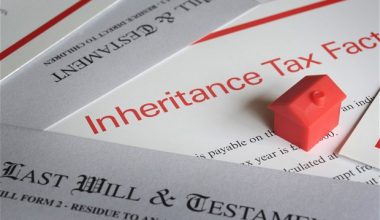According to a 2021 Pew Research Center estimate,16 million Americans work for themselves. However, planning for retirement has its own peculiarities and difficulties for many of these workers. Their retirement needs cannot be met by a company retirement plan, and the modest contribution limits for standard and Roth IRAs just aren’t sufficient either. Self-employed employees do have additional savings options to increase the size of their retirement nest egg, such as the SEP IRA, rather than taking the chance of having a reduced quality of living in retirement. In this post, we will be dealing with what is a sep account, its limits, rules, and how to set up an account.
Sep Account
A SEP IRA, or Simplified Employee Pension Individual Retirement Account, is comparable to an IRA in many ways, but it also offers a few unique benefits that make it particularly appealing to people who don’t have access to employer-sponsored retirement plans. For anyone who is self-employed, owns a business, hires employees, or makes a living from freelancing, a SEP IRA is a tax-advantaged retirement plan. SEP IRA contributions are made to the employee by the firm since they are regarded as employer contributions.
The SEP IRA is made to be straightforward, especially if you run your own business and don’t employ any other people.
How a Simplified Employee Pension (SEP) Works
Since a SEP IRA lacks many of the start-up and ongoing expenses associated with the majority of traditional employer-sponsored retirement plans, it is an appealing alternative for many business owners. Additionally, many businesses set up a SEP IRA to enable them to contribute more to their own retirement than a typical IRA permits.
Due to the eligibility restrictions for contributions, which include a minimum age of 21, at least three years of employment, and a minimum salary of $650 for 2022 (or 750 for 2023), small businesses choose SEP IRAs. A SEP IRA also enables employers to forego payments in years of weak business.
For taxation reasons, SEP IRAs are treated similarly to ordinary IRAs and offer the same investment possibilities. SEP IRAs are subject to the same transfer and rollover regulations as ordinary IRAs. An employer can deduct the amount of contributions made to SEP IRA accounts from its taxes. Additionally, the company is not bound by a yearly contribution requirement; choices regarding whether to contribute and how much to do so can be made annually.
Sep Account Limits
Employer contributions cannot be greater than $66,000 in 2023 (increased from $61,000 in 2022) or 25% of an employee’s salary. Retirement distributions from SEP IRAs limits are taxed as ordinary income, just like withdrawals from a traditional IRA account.
In a sole proprietorship, the employee-owner pays their own salaries and has the option of contributing to a SEP, up to a maximum of 25% of salaries (or earnings) less the SEP contribution. The reduced rate for a certain contribution rate (CR) is equal to CR (1 + CR) for a 25% contribution rate. This results in a 20% decrease rate, similar to the example before.
SEP contributions, when dropped represent traditional IRA assets and are subject to many of the traditional IRA restrictions because the funding mechanism for a SEP plan is a traditional IRA. These rules include the following:
- Distribution rules
- Investments rules
- The employee’s ordinary IRA contributions, not the SEP employer account contributions, are subject to the usual IRA contribution and deduction rules.
- The documentation needed to create an IRA
Each SEP IRA account limit must satisfy the documentation requirements for a regular IRA in addition to the documents necessary for establishing a SEP plan.
Sep Account Rules
First off, SEP IRAs permit an employer to contribute up to the lesser of 25% of your pay or $66,000 rather than the $6,500 annual cap on IRA contributions that would apply to workers under the age of 50 for regular and Roth plans in 2023. This also gives self-employed employees the chance to save more money than they could in a 401(k), which has a cap on employee contributions of $22,500 for 2023.
According to the IRS, the SEP IRA account rules are subject to the same investment, distribution, and rollover requirements as IRAs.
#1. Traditional SEP IRA Account Rules
You can withdraw money from your SEP IRA at any time, but withdrawals made before the age of 59 and a half will be counted as income for tax purposes and may incur a 10% tax penalty. In addition, just like with a regular IRA, the IRS mandates that you begin taking required minimum distributions the year you reach 73.
#2. Roth SEP IRA Account Rules
The SECURE Act 2.0’s provision for the Roth SEP IRA went into effect in 2023. Since you had paid tax on the money, withdrawals at any time are free of tax and penalty. However, there is a 10% tax penalty for withdrawals of earnings prior to age 59 and a half. On Roth accounts, there are no mandatory minimum distributions.
If you work for yourself, you can contribute to a SEP IRA even if you have other retirement accounts. You can form a second SEP IRA and make contributions if your business is a side gig and you still have a regular employer. You can also continue to contribute to your employer’s 401(k). A SEP IRA is distinct from an IRA, so you can make contributions to both of them.
But be aware that if you do decide to hire staff, the SEP IRA must treat them similarly to you. If you put a significant portion of your salary into a SEP IRA, you must also put a comparable portion of your employees’ income into their own retirement plans. The following qualified personnel must get the same proportion of your employer payment as you do:
- Have reached the age of 21.
- Earning more than $600 each year
- Worked for your company for three of the past five years.
Continue to bear that in mind as you go. A SIMPLE IRA can be a better option for some business owners. You can also make investments in relatively high-return assets like stocks and stock funds when you open a SEP IRA with a brokerage. However, the brokerage will also let you invest in a wide range of other securities, such as bonds, options, and more.
#3. Income Limitations
Too much money can be a restriction for players; the 2023 eligible pay cap is $330,000. Contrary to qualified retirement plans, the SEP does not permit participants, including the business owner, to borrow more than $50,000 from their vested amount, or 50% of their vested balance, whichever is smaller.
#4. Exclusion of Employees
Even if they otherwise qualify under the plan’s terms, certain employees may be prohibited by their employer from taking part in a SEP IRA. Employees who are entitled to retirement benefits by a collective bargaining agreement with a union, for instance, may be excluded. As long as they do not receive U.S. salaries or other service compensation from the employer, nonresident employees may likewise be excluded.
#5. Deposits and Withdrawals
With the exception of any specific restrictions placed on standard IRAs, SEP contributions and profits are retained in SEP IRAs and may be taken whenever desired. Withdrawals are taxed in the year they are made. Participant withdrawals made before to age 59 and a half are often subject to an extra 10% tax.
#6. Transfers and Rollovers
The transfer of SEP contributions and earnings to other IRAs and retirement plans is permitted tax-free. The required minimum distributions requirements for IRAs must be followed when finally distributing SEP deposits and earnings.
How to Set up a Sep Account
Selecting a financial institution to function as trustee for the SEP-IRAs holding each employee’s retirement plan assets will be your first step. The contributions you make to the plan will be transferred to these accounts. You can set up a SEP account in three steps:
#1. Written Agreement
The written agreement must contain the employer’s name, the conditions for employee involvement, the official’s signature, and a clear allocation method. Form 5305-SEP, a sample SEP plan document, is provided by the IRS. Therefore, Form 5305-SEP cannot be useful if you:
- Maintain any additional eligible plans,
- Want a plan year other than the calendar year,
- Use leased personnel, or
- Use an allocation mechanism that takes into consideration the Social Security deposits you make on behalf of your staff.
You may use a prototype document if you are unable to use Form 5305-SEP. These are typically offered by a mutual fund, an insurance provider, a bank, or another legitimate institution. Additionally, you could have a SEP specially created for your company.
#2. Provide Information to Participants
Your qualified personnel must be provided with:
- An awareness that you have implemented the SEP
- Requirements in order to receive an allocation.
- The methodology for allocating employer contributions
If you use Form 5305-SEP, you must distribute a copy of the form and accompanying instructions to each of your employees. Before each employee receives the following information, the model SEP is not freely useful.
- A declaration that IRAs other than the one to which the employer contributes may offer various rates of return and have various conditions.
- A promise that the SEP administrator will deliver a copy of any amendments and a written explanation of their implications within 30 days of the amendment’s effective date.
- By January 31 of the following year, the administrator will notify the participant in writing of any employer contributions made to the participant’s IRA.
If you use a sample plan or a specially created one, you must provide all qualified employees with the same information.
#3. Create SEP-IRA Accounts for Each Employee.
Each eligible employee must establish a SEP-IRA on their own behalf or for themselves. They could be connected to banks, insurance providers, or other respectable financial entities. Traditional IRAs must receive all SEP donations. Employees are in charge of choosing the investments for their SEP-IRA funds. The financial institutions investing in your SEP payments will send you and your employees a statement at the time of your initial SEP contributions and at least once a year after that. Any fees and commissions that each institution levies on SEP assets withdrawn before the end of a predetermined time period must be clearly stated.
What Is the Difference Between a Sep and an IRA?
Both the small business owner or sole proprietor and the employee can make contributions to a SIMPLE IRA. In contrast, a SEP-IRA only permits business owners can make contributions for themselves as well as their employees.
What Is the Advantage of a Sep Account?
High contribution limits, tax-deferred compounding, reduced taxable income, and a practical way to prepare for retirement are just a few benefits of a SEP account.
Why Is a Sep Better Than a 401K?
You can put away up to 25% of your income in a SEP IRA.
What Is the Disadvantage of Sep IRA?
Employees do not make their own contributions, and you are required to make the same amount to your own SEP account as you do to employee remuneration.
Is It Better to Contribute to a Sep or an IRA?
You can save up to $61,000 in 2022 and $66,000 in 2023 with a SEP IRA, which is nearly ten times that amount.
Which Is Better Sep or 401K?
Although the solo 401(k) and SEP IRA appear to have identical annual contribution limitations, the 401(k) may be a superior choice for single freelancers.
Related Posts
- WHAT IS A SEP IRA? Withdrawal Rules And Contribution Limits
- RETIREMENT PLANS FOR SELF-EMPLOYED: A Guide to Identifying the Best Retirement Plan for Self-Employed 2023
- SELF EMPLOYED 401K: Definition, Limit & How to Get It
- SEP IRA RULES: Sep IRA Rules 2023
- SELF-EMPLOYED RETIREMENT PLANS: Best 2023 Picks, Comparisons & Reviews






